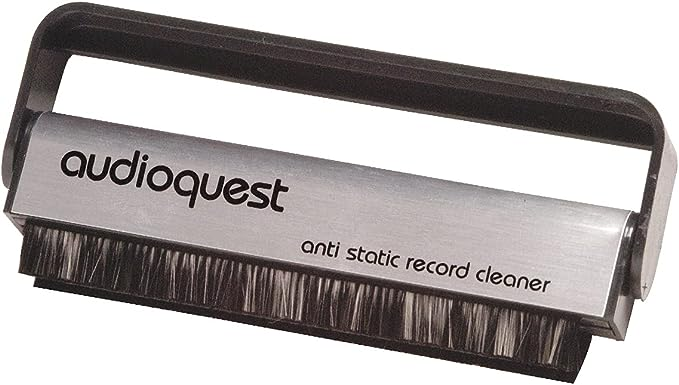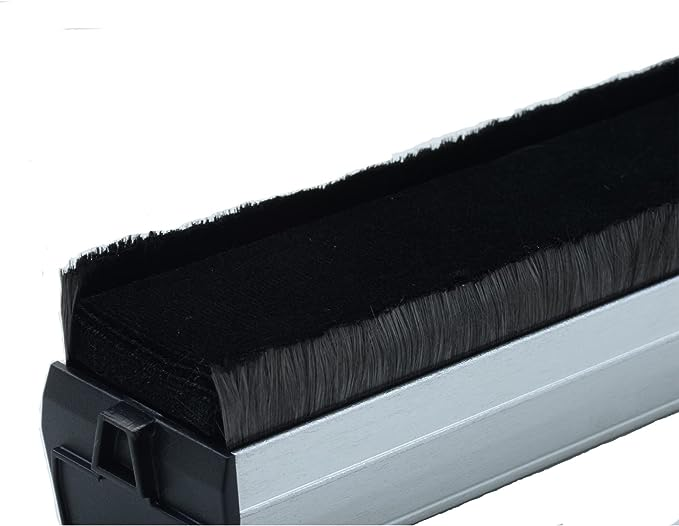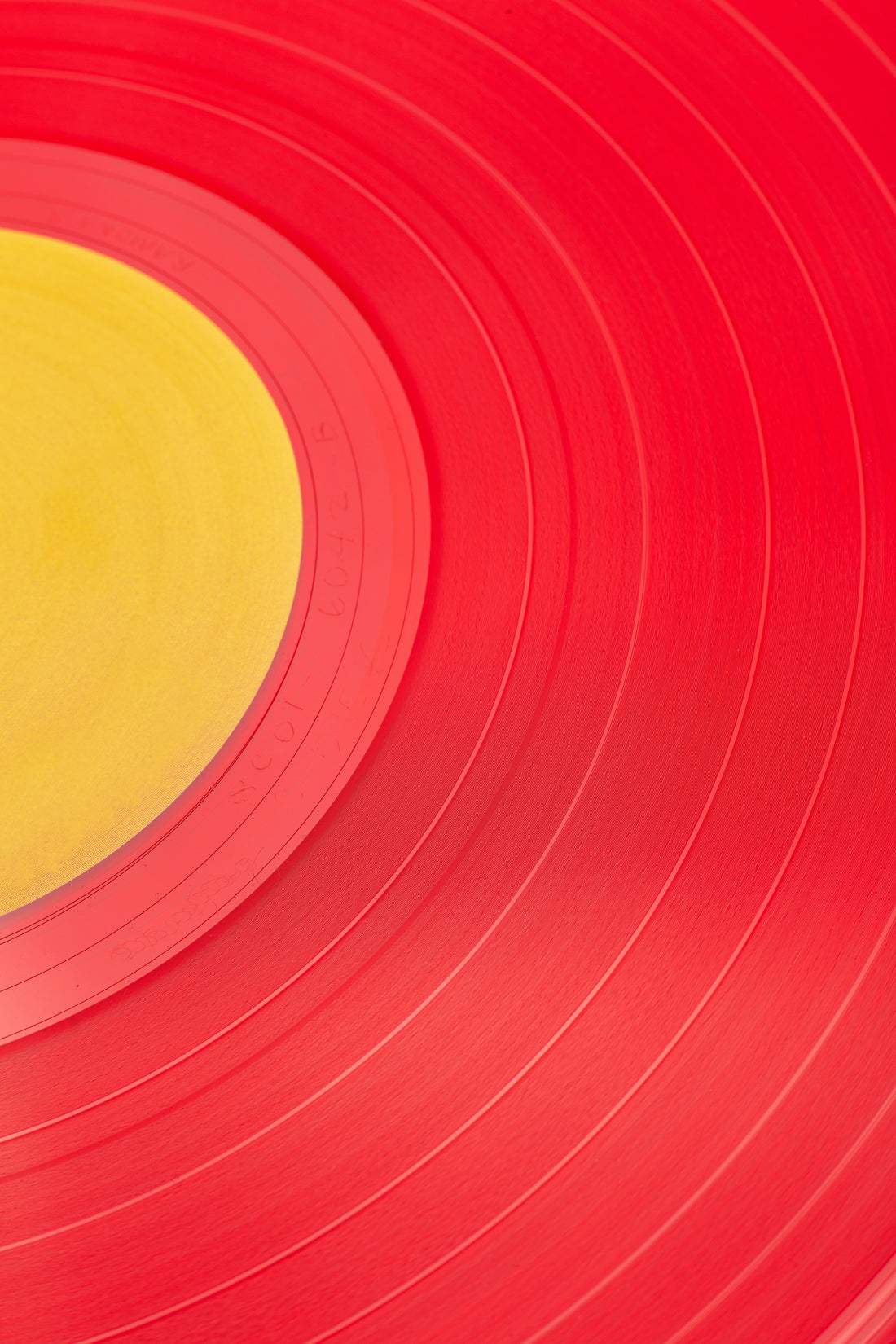Introduction

Vinyl records have experienced a remarkable resurgence in recent years, captivating music enthusiasts with their warm sound and nostalgic charm. The popularity and price of vinyl records have soared, with sales reaching new heights and a growing community of collectors embracing the format. However, amidst the excitement of building a vinyl collection and enjoying the tactile experience of playing records, there is a common issue that often plagues vinyl record enthusiasts: static cling.
Get ready to say goodbye to static cling on your vinyl records! In this article, we're diving deep into the world of static cling and giving you the ultimate guide to combat it. From game-changing tools to expert techniques, we've got you covered. Say hello to an optimal listening experience and wave goodbye to those pesky interruptions caused by static electricity. Your cherished vinyl collection deserves nothing less!
Understanding Static Electricity
Static cling occurs when two objects with different electrical charges come into contact. In the case of vinyl records, this can happen when the record brushes against other materials or even during the process of removing it from its sleeve. When this contact occurs, electrons transfer from one object to another, resulting in an imbalance of charges.
This transfer of electrons leads to the buildup of static electricity on the surface of vinyl records. The static charge attracts dust and debris, causing them to cling to the record's surface. This not only impacts the visual appeal of the record but can also have a negative effect on sound quality.
When playing a vinyl record affected by static cling, you may notice the presence of pops, crackles, and other distortions. These unwanted noises can significantly detract from the listening experience, obscuring the pure sound of the music and diminishing its overall quality. The buildup of static electricity can also create inconsistencies in the playback speed, further compromising the enjoyment of the record.

It's worth noting that not all vinyl records are equally prone to static cling. Factors such as the style and quality of the pressing, the composition of the vinyl material, and environmental conditions can all contribute to the level of static electricity accumulation. However, regardless of these variables, it is essential to take proactive measures to minimize static cling and maintain the integrity of your vinyl collection.
Tool for Dealing with Static Cling
To combat static cling and maintain the pristine condition of vinyl records, there are several effective tools available that can effectively remove static electricity.
One popular tool is an anti-static brush designed specifically for vinyl records. These brushes feature carbon fibers that neutralize static charges and attract tiny particles of dust and dirt that can accumulate in the micro grooves of the record. By gently gliding the brush along the surface of the record, you can effectively remove static cling and ensure a clean, static-free playing surface. Some recommended options include the AudioQuest Record Brush and the Mobile Fidelity Sound Lab Anti-Static Record Brush.

Regularly using a record cleaning brush on your vinyl records can prevent the buildup of static electricity and ensure optimal sound quality during playback.
It's important to maintain a clean and dust-free environment when handling vinyl records. Avoiding materials that generate static electricity, such as synthetic fibers or wool, is also beneficial. When removing a record from its sleeve, try to touch the edges or the label rather than the playing surface to minimize the transfer of static charges.
By incorporating these tools and practices into your vinyl record maintenance routine, you can effectively combat static cling and enjoy the best possible sound quality from your cherished collection.
Also check out: Exploring Different Types of Turntable Mats: Cork, Acrylic, and Felt. Discover the benefits and characteristics of each mat material, helping you make an informed decision to enhance your vinyl listening experience.
How to Use an Anti-Static Brush on Vinyl Records
To ensure the best results when using an anti-static brush on vinyl records, it is important to follow a proper cleaning process. Here are detailed steps to expand on the section:
Ensure anti static brush vinyl is clean and free from debris:
Before using the brush, make sure it is clean and free from any dust or debris that may have accumulated on the bristles. This can be done by gently tapping the brush against a clean surface or blowing air onto the bristles.
Place the record on a clean and flat surface:
Find a clean and flat surface to place the vinyl record on. It is essential to have a stable and level surface to prevent the record from getting scratched or damaged during the cleaning process.
Gently hold the brush with the bristles facing downwards:
Hold the anti-static brush delicately in your hand, ensuring that the bristles are facing downwards towards the record's surface. This position allows the brush to effectively reach into the grooves of the record and remove any accumulated dust or dirt.
Starting from the outer edge of the record, lightly brush in a circular motion towards the center:
Begin the cleaning process by starting at the outer edge of the record. Using light pressure, move the brush in a circular motion towards the center of the record. This motion helps dislodge any dirt particles that may have settled in the grooves over time.
Continue brushing until you have covered the entire surface of the record:
As you move the brush towards the center of the record, continue the circular brushing motion and cover the entire surface of the vinyl record. Take your time, ensuring that you have sufficiently cleaned every part of the record.
For optimal results, repeat the process in the opposite direction:
To achieve thorough cleaning, it is recommended to repeat the brushing process in the opposite direction. This helps capture any remaining dust or dirt particles that may have been missed during the first pass.
After using the record brush, use a cleaning solution specifically designed for vinyl records to remove any remaining dirt or grease:
Once you have completed the brushing process, it is advisable to use a cleaning solution that is specifically formulated for vinyl records. Apply the cleaning solution to a microfiber cloth or a soft, lint-free cloth, and gently wipe the record surface in a circular motion. This step helps remove any remaining dirt or grease, ensuring a clean and pristine playing surface.

Additional Tools and Techniques for Reducing Static Cling
While anti-static brushes are highly effective, there are other tools and techniques you can purchase and incorporate into your vinyl record maintenance routine to further reduce static cling:
Record Cleaning Solutions: Use specialized record cleaning solutions to deep clean your vinyl records. These solutions help remove stubborn dirt and contaminants, ensuring a pristine surface.
Carbon Fiber Brushes: Consider using a carbon fiber brush in conjunction with an anti-static brush. The carbon fibers assist in dislodging dirt particles, while the anti-static brush removes any static charge.

Anti-Static Sleeves: Invest in anti-static inner sleeves for storing your vinyl records. These sleeves create a barrier that helps prevent static buildup during storage.

Proper Handling and Storage: Handle vinyl records by their edges, avoiding contact with the playing surface. Store records in a cool, dry place away from direct sunlight, dust, and humidity.

Vinyl Record Cleaning Machines: For avid collectors, vinyl record cleaning machines offer a more thorough and efficient way to clean and remove static cling from multiple records.
DIY Solutions for Managing Static Cling
If you prefer a DIY approach, here are a few simple solutions to help manage static cling on vinyl records:
Dryer Sheets:
Gently wipe the record surface with an unscented dryer sheet to reduce static cling. However, exercise caution as some dryer sheets may leave residue or impact the record's sound quality.
Anti-Static Gun:
Use an anti-static gun to neutralize the static charge and dirt free it on the record surface before playback. These guns emit ions that counteract the static charge, reducing the attraction of dust and dirt.
Humidifier:
Maintain a suitable humidity level in your listening environment. Increasing the humidity can help minimize static buildup on vinyl records.
Tips for Preventing Static Cling
In addition to using the right tools, there are several preventive measures you can take to minimize static cling on vinyl records and maintain their optimal condition.
Proper storage and handling of your vinyl records is crucial. Make sure they are stored in a clean and dust-free environment, preferably in protective inner sleeves. These sleeves not only protect the records from dust but also help reduce static cling. When handling records, avoid touching the playing surface with bare hands, as oils and dirt from your fingers can attract static electricity. Instead, hold the records by their edges to minimize contact with the playing surface and reduce the risk of transferring any unwanted residue.

Controlling the environment in which you play your vinyl records can also help minimize static cling. Static electricity is more likely to occur in dry environments with low humidity levels. Consider using a humidifier to maintain optimal humidity, as this can help reduce static electricity. Conversely, try to avoid playing records near materials that are known to generate static, such as carpets and synthetic fabrics. These materials can contribute to the buildup of static charges and increase the likelihood of static cling.
Regular cleaning is another important aspect of minimizing static cling on vinyl records. Before each play, use a carbon fiber brush or a record cleaning brush to gently remove dust and debris from the surface. These brushes will help neutralize static charges and ensure a clean playing surface. For deeper cleaning, consider using a cleaning solution specifically designed for vinyl records. Be sure to choose a solution that is safe for use on vinyl and follow the manufacturer's instructions carefully to prevent any damage to your records.

Troubleshooting Static Cling Issues
Despite taking preventive measures, you may still encounter stubborn static cling on your vinyl records. Here are some troubleshooting tips to address this issue:
First, it's important to identify common causes of static cling on your records. Dust and debris can accumulate over time. Ensure that you are using the correct tools and cleaning methods to minimize the presence of dust and debris on the record's surface. If you're unsure about proper cleaning techniques or if your records require deep cleaning or restoration, consider seeking professional assistance.
During playback, there are additional steps you can take to reduce static cling. Using an anti-static mat or record weight can help dissipate static electricity and minimize its impact on the playing surface. These accessories create a barrier between the record and the turntable, reducing the occurrence of static cling. Additionally, ensure that your turntable setup is properly grounded and free from any electrical interference, as this can contribute to static issues.

Also check out: For an informative article on how a record weight can enhance vinyl record playback, you can check out this resource: How Does a Record Weight Improve Vinyl Record Playback? This article delves into the benefits and importance of using a record weight and offers insights into improving your overall vinyl listening experience.
If you're dealing with persistent static cling that is not easily resolved with preventive measures, more advanced techniques may be required. Ionizers and anti-static guns are tools that can effectively neutralize static charges. These devices emit ions or bursts of ionized air, which helps to eliminate static electricity. However, it is important to exercise caution and carefully follow the manufacturer's instructions when using these tools to avoid any potential damage to your records.
Conclusion
Prepare to banish the static cling curse and unlock a world of pristine sound on your vinyl records! We know how incredibly frustrating it can be for collectors and music enthusiasts when that annoying static electricity interferes with your listening experience. Get ready to immerse yourself in an audio paradise like never before!

Remember, the key to minimizing static cling and preserving the life of your beloved vinyl records lies in consistent care and maintenance. By following these steps diligently, you'll ensure that each spin of your record is free from any disruptive interference and that the sound quality remains exceptional.
So, take the time to clean your records regularly, handle them with care, and create an optimal environment for your vinyl collection. Your dedication will be rewarded with a truly immersive and captivating listening experience. Say goodbye to static cling and let the music transport you to new dimensions of sonic bliss. Happy listening!
